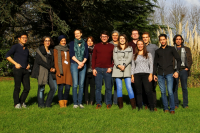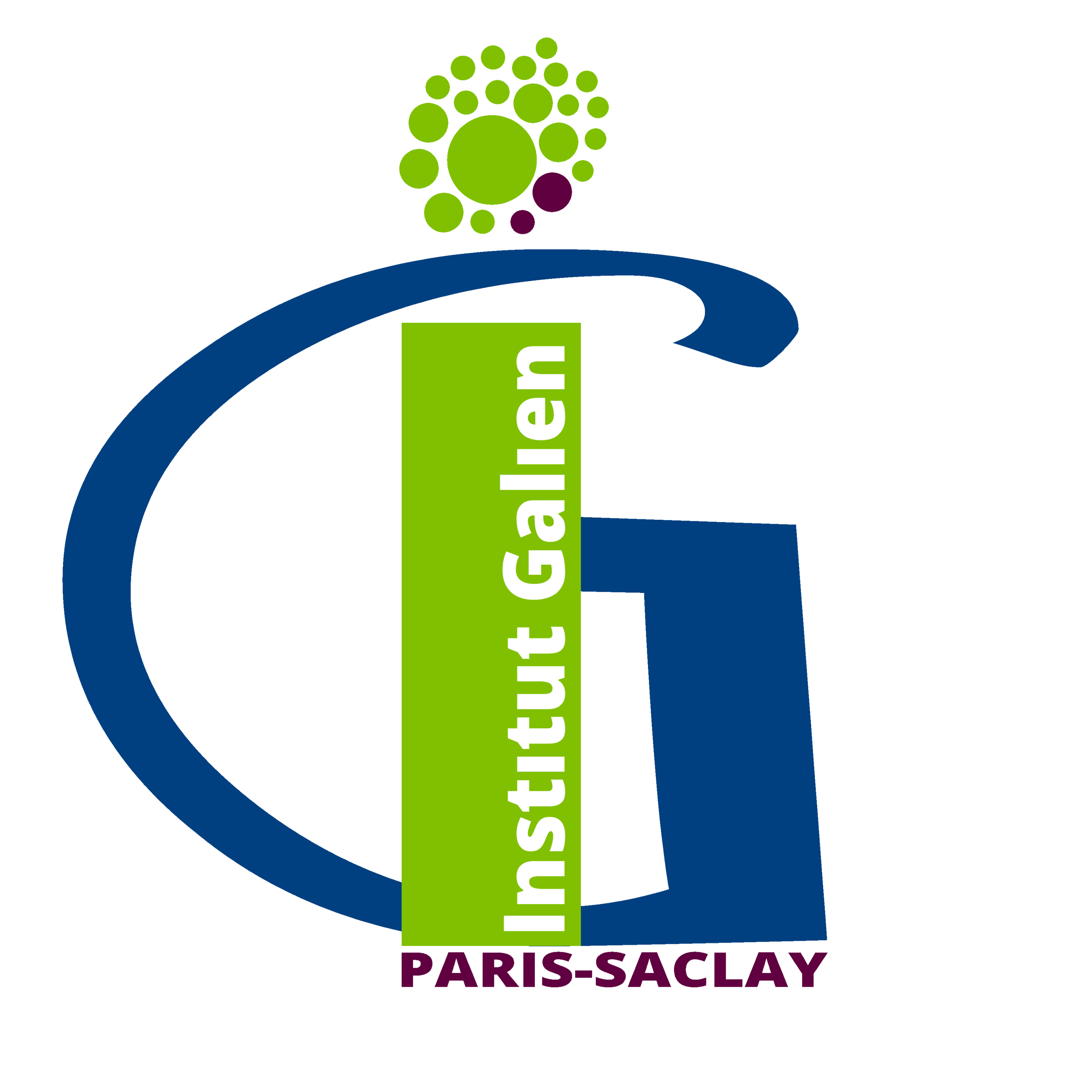Physical Pharmacy
Research topics
The research carried out by team 3 aims to design and develop innovative systems of pharmaceutical interest. We progress from the molecular level (active ingredient) to the supramolecular organization (associative polymers, hydrogels, biopolymer complexes, etc.) in order to design original systems (complex or hybrid gels, emulsified systems without synthetic surfactants, etc.). This approach is based on the expertise of team members in the concepts and characterization methods in physical crystallography and in physicochemistry of colloids. More specifically, the team develops three main research topics:
– Topic 1, “Structures and properties of molecules of pharmaceutical interest”, seeks the development of tools for high resolution crystallography to determine the electronic properties related to active ingredient reactivity. Our research is based on experimental and theoretical modeling tools (ab initio and periodic calculations) of the structure, the electronic density and the electrostatic properties of molecules in the crystal environment. In addition, an original photo-crystallogenesis method based on the laser beam polarization (NPLIN method) has been implemented to control the crystallization of crystal polymorphs. Part of the work carried out in this area has very recently evolved towards photo-crystallography for the study of the structural and electronic properties of photosensitizing molecules and organometallic complexes (P. Coppens & B. Fournier, J Synchrotron Radiat. 2015). Topic 1 is the subject of a long-standing collaboration between team 3 of the Institut Galien Paris-Saclay and SPMS Laboratory, Structures, Properties and Modeling of Solids (UMR CNRS 8580, Ecole CentraleSupélec, Gif-sur-Yvette).
– Topic 2, “Design and characterization of polymer-based systems for pharmaceutical applications”, aims to design new polymer-based systems in the form of physical or chemical gels with or without colloidal objects in order to develop new systems for more effective administration. The active ingredient release can be controlled for example by physiological stimuli such as pH or temperature, or by bioadhesion.
– Topic 3, “Emulsified systems”, focuses on the formulation and characterization of innovative emulsified systems for pharmaceutical and cosmetic applications. The originality of the approach consists in formulating and stabilizing these emulsions either with biopolymers or with nanoparticles (Pickering emulsions) in order to limit the use of potentially toxic or irritant synthetic surfactants.

Expertise
- Formulation and characterization of emulsions and nanoemulsions stabilized by biopolymers (proteins and polysaccharides)
- Formulation and characterization of Pickering emulsions stabilized by biodegradable particles
- Study of formation and stabilization mechanisms
- Encapsulation of active substances
- Design and characterization of gels and polymer-based systems
- Hybrid gels containing liposomes for intratympanic injection
- Study of rheological, mechanical and injectability properties
- Low and high resolution crystallography and synchrotron measurements
- Control of crystal polymorphism
- Photo-crystallography of “photosensitizing†molecules and organometallic complexes
- Methodology and software developments for diffraction data analysis and for determination of electrostatic properties.
The team
Head
Academic and support staff members
PhD students and Post-doctoral Researchers
Previous team members
JAUDOUIN Céline - PhD student
MAAROUFI Zeineb - PhD student
ROBIN Baptiste - PhD student
BELADJINE Mohamed Amine – PhD student
GERHKE Maria – Post-Doctoral Researcher
N'GUESSAN-GNAMAN Kakwokpo Clémence – PhD student
ALBERT Claire – PhD student
ALI Ali – PhD student
JOUANNY-BOUYER Eléonore – PhD student
BURCKBUCHLER Virginie – Post-doctoral Researcher
Most recent publications
TO BE ADDED FOLLOWING THE FORMAT BELOW (environ 10)
- Wu X., Chantemargue B., Di Meo F., Bourgaux C., Chapron D., Trouillas P., Rosilio V. 2019. Experimental and theoretical approaches for deciphering the peculiar behavior of beta-lapachone in lipid monolayers and bilayers, Langmuir; DOI: 10.1021/acs.langmuir.9b02886
- N’Diaye M., Vergnaud-Gauduchon J., Nicolas V., Faure V., Denis S., Abreu S., Chaminade P., Rosilio V. 2019. Hybrid lipid polymer nanoparticles for combined chemo- and photodynamic therapy, Molecular Pharmaceutics, 16, 4045-4058; DOI: 10.1021/acs.molpharmaceut.9b00797
- Massiot J., Rosilio V., Makky A. Photo-triggerable liposomal drug delivery systems: From simple porphyrin insertion in the lipid bilayer towards supramolecular assemblies of lipid-porphyrin conjugates, J. Mater. Chem. B, 2019. Doi: 10.1039/c9tb00015a
- N’Diaye M., Michel J.P., Rosilio V.<, Combined QCM-D and AFM experiments for understanding the formation of hybrid phospholipid-polymer nanoparticles, Phys. Chem. Chem. Phys. 21, 4306-4319, 2019, Doi: 10.1039/C8CP06955G
- Guegain E., Michel J.P., Boissenot T., Nicolas J. 2018. Tunable Degradation of Copolymers Prepared by Nitroxide-Mediated Radical Ring-Opening Polymerization and Point-by-Point Comparison with Traditional Polyesters, Macromolecules 51(3), 724-736; DOI: 10.1021/acs.macromol.7b02655
- Massiot J., Rosilio V., Ibrahim N., Yamamoto A., Nicolas V., Konovalov O., Tanaka M., Makky A., Synthesis and characterization of new lipid-porphyrin conjugates as efficient and selective agents for photodynamic therapy of cancers, Chem. Eur. J. 24, 19179-19194, 2018. Doi: 10.1002/chem.201804865
- Michel J. P., Wang Y. X., Kiesel I., Gerelli Y. and Rosilio V. 2017. Mechanism of disruption of asymmetric lipid bilayer models mimicking the outer membrane of Gram-negative bacteria by an active plasticin, Langmuir 33(41), 11028-11039; DOI: 10.1021/acs.langmuir.7b02864
- Makky A., Bousset L, Polesel-Maris J, Melki R. 2016. Nanomechanical properties of distinct fibrillar polymorphs of the protein a-synuclein. Scientific Report 2016, 6, 37970. DOI: 10.1038/srep37970 (Recommended by F1000)
- Essaid D., Rosilio V., Dadhildjian K., Solgadi A., Vergnaud J., Kasselouri A. Chaminade P. 2016. Artificial plasma membrane models based on lipidomic profiling, Biochimica et Biophysica Acta (BBA) – Biomembranes 1858, 2725-2736; DOI: 10.1016/j.bbamem.2016.07.010
- Michel J. P., Wang Y. X., Dé E., Fontaine P., Goldmann M. and Rosilio V. 2015. Charge and aggregation pattern govern the interaction of plasticins with LPS monolayers mimicking the external leaflet of the outer membrane of Gram-negative bacteria. Biochimica et Biophysica Acta (BBA) - Biomembranes 1848, 2967-2979; DOI: 10.1016/j.bbamem.2015.09.005
[zotpress year="2021"]
PhD theses defended since 2014
| 2020 | |
|---|---|
| JAUDOUIN Céline | |
| MAAROUFI Zeineb | |
| ROBIN Baptiste |
| 2019 | |
|---|---|
| BELADJINE Mohamed Amine | Co-encapsulation d’un agent immunosuppresseur et d’un agent anti-inflammatoire dans une émulsion de Pickering pour le traitement topique de pathologies cutanées |
| 2018 | |
|---|---|
| N’GUESSAN-GNAMAN Kakwopko Clémence | Développement d’un gel vaginal à base de poloxamer 407, d’alginate de sodium et de Lactobacillus crispatus pour la prévention de la gonococcie |
| 2017 | |
|---|---|
| ALBERT Claire | Emulsions de Pickering biodégradables stabilisées par des nanoparticules de poly(acide lactique-co-glycolique) : étude physico-chimique et potentialité pharmaceutique |
| 2016 | |
|---|---|
| Ali ALI | Nanoémulsions d'intérêt pharmaceutique stabilisées par la beta-lactoglobuline |
| 2015 | |
|---|---|
| EL KECHAI Naila | Gels d’acide hyaluronique contenant des liposomes pour la libération prolongée d’un corticoïde dans l’oreille interne |







